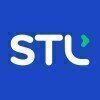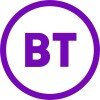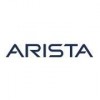Filter interviews by
Nvidia Interview Questions and Answers
78 Interview questions
An LRU (Least Recently Used) cache efficiently stores limited data, evicting the least recently accessed items when full.
Use a hash map to store key-value pairs for O(1) access.
Maintain a doubly linked list to track the order of usage.
When adding a new item, check if it exists in the cache.
If the cache is full, remove the least recently used item from the list and hash map.
Example: For a cache size of 2, adding (1...
I am a detail-oriented data entry operator with a passion for accuracy and efficiency in managing information.
Experience: Over 3 years of data entry experience in various industries, including finance and healthcare.
Skills: Proficient in Microsoft Excel and data management software, ensuring quick and accurate data processing.
Attention to Detail: Consistently maintained a 99% accuracy rate in data entry tasks, min...
Mealy and Moore machines are types of finite state machines; they differ in output generation based on states and inputs.
Mealy machines produce output based on current state and input, leading to faster response times.
Moore machines produce output based solely on the current state, which can simplify design and debugging.
Example: In a Mealy machine, an output can change immediately with an input change; in a Moore...
Designing a flip-flop using multiplexers (MUX) involves creating a circuit that can store a binary state.
A flip-flop is a basic memory element in digital electronics.
Using a 2-to-1 MUX, we can implement a D flip-flop.
The D flip-flop captures the value of the D input at a clock edge.
The MUX selects between the current state and the input based on the clock signal.
Example: For a D flip-flop, connect D to one MUX inp...
Leveraging Nvidia enhances AI capabilities, accelerates data processing, and optimizes solutions across various industries.
Utilize Nvidia GPUs for high-performance computing in AI and machine learning tasks.
Implement Nvidia's CUDA platform to accelerate parallel processing in data-intensive applications.
Leverage Nvidia's deep learning frameworks, like TensorRT, for optimizing inference in real-time applications.
Ex...
Experienced Solutions Architect with a strong background in designing scalable cloud solutions and leading cross-functional teams.
Led a team to migrate a legacy application to AWS, improving performance by 30%.
Designed a microservices architecture for a healthcare application, enhancing scalability and maintainability.
Collaborated with stakeholders to gather requirements and create a roadmap for a new product laun...
A roadmap for a hypothetical product outlines key phases from ideation to launch and beyond.
1. Ideation Phase: Gather user feedback and identify market needs. Example: Conduct surveys to understand pain points.
2. Design Phase: Create wireframes and prototypes. Example: Use tools like Figma to visualize the product.
3. Development Phase: Build the product using agile methodologies. Example: Implement sprints for ite...
Nvidia is a leader in AI, gaming, and data center solutions, driving innovation in GPU technology and deep learning.
Nvidia dominates the GPU market, powering gaming consoles like PlayStation and Xbox.
Their CUDA platform enables developers to leverage parallel computing for AI and machine learning applications.
Nvidia's data center solutions, such as DGX systems, are critical for enterprises in AI research and deplo...
CGC cell is a standard cell used in physical design with specific characteristics for circuit implementation.
CGC cell stands for Custom Gate Cell, which is a standard cell used in physical design for implementing logic functions.
CGC cells have specific characteristics like fixed height and width, predefined power and ground connections, and a set of pins for input and output signals.
When designing a circuit using ...
Tie cell diagram for low/high cells in physical design engineering.
Tie cell diagram is used in physical design to connect multiple power domains.
Low tie cells are used to connect low power domains, while high tie cells are used for high power domains.
Examples of tie cells include power switches and isolation cells.
Nvidia Interview Experiences
112 interviews found
Interview Questionnaire
44 Questions
- Q1. Tell me about yourself
- Q2. What is your goal?
- Q3. Find whether no. is even or odd…(I gave mod2 solution)
- Ans.
The solution to determine whether a number is even or odd is to use the modulus operator with 2.
Use the modulus operator (%) to find the remainder when the number is divided by 2.
If the remainder is 0, the number is even. Otherwise, it is odd.
Example: 7 % 2 = 1, so 7 is an odd number.
Example: 10 % 2 = 0, so 10 is an even number.
- Q4. Then he asked about machine cycles required registers required ….what exactly happens at os level…….then drawbacks of all these…
- Q5. So asked to give another solution to do same….so I suggested (X &1)…
- Q6. He said still it require 1 extra register…. I gave another solution using shift operator
- Q7. What are sockets, pipes, inter-process communication?
- Ans.
Sockets, pipes, and inter-process communication are mechanisms used for communication between processes.
Sockets are endpoints for sending and receiving data across a network. They enable communication between processes running on different machines.
Pipes are a form of inter-process communication that allows communication between processes running on the same machine. They provide a unidirectional flow of data.
Inter-pro...
- Q8. What is little endian and big endian?
- Ans.
Little endian and big endian are two ways of storing multi-byte data types in computer memory.
Little endian: least significant byte is stored first
Big endian: most significant byte is stored first
Example: In little endian, the number 0x1234 is stored as 0x34 0x12
Example: In big endian, the number 0x1234 is stored as 0x12 0x34
- Q9. WAP to determine whether your system is little endian or big endian?
- Q10. Convert little endian to big endian in constant time
- Q11. I asked what does nvidia exactly do in s/w development section?
- Q12. He asked to give my opinion …. I told they take diff OS n optimize them to work more efficiently (in terms of time and memory) with nvidia cards and GPUs
- Q13. He said your guess is correct….and explained even more
- Q14. Volatile memory and volatile variables
- Q15. Function pointers and one program to implement function pointer
- Q16. Uses of function pointer…(I said to send a function as argument)….he asked more…(I told that I know only one)
- Ans.
Function pointers are used to pass functions as arguments to other functions, allowing for dynamic behavior and flexibility in programming.
Function pointers can be used for callback functions in event handling systems.
They can be used to implement polymorphism in object-oriented programming.
Function pointers are commonly used in sorting algorithms to specify custom comparison functions.
- Q17. What is polymorphism? What is virtual function…? How will you implement if I tell you to develop compiler?
- Ans.
Polymorphism is the ability of a function to behave differently based on the object it is called with. Virtual functions allow dynamic binding.
Polymorphism allows objects of different classes to be treated as objects of a common superclass.
Virtual functions are functions in a base class that are overridden in derived classes.
To implement a compiler, you would need to handle polymorphism and virtual functions for proper...
- Q18. What is function template? Do you know what exactly happen when template is executed? If you don’t then tell how will you do that?
- Ans.
A function template is a generic function that can work with any data type. When a template is executed, the compiler generates a specific function for each data type used.
Function template allows writing a single function that can work with different data types.
When a template is executed, the compiler generates a specific function for each data type used.
Templates are a powerful feature in C++ that enable generic pro...
- Q19. What happens in recursive function calls? What are the drawbacks?
- Q20. What is process, Thread? What is multi-threading?
- Q21. Design data structure to implement multi-threading
- Q22. Can you find maximum stack memory available using above data structure
- Ans.
The maximum stack memory available cannot be determined using the given data structure.
The maximum stack memory available depends on the hardware and operating system.
It is not possible to determine the maximum stack memory based on the given data structure alone.
To determine the maximum stack memory, one would need to consider the hardware limitations and the operating system's stack size limit.
The data structure prov...
- Q23. He was going too deep at OS level….mainly kernel part….how kernel manages all processes?
- Q24. Thread scheduling….difference between process and thread scheduling
- Ans.
Process scheduling manages execution of processes, while thread scheduling manages execution of threads within a process.
Process scheduling involves allocating CPU time to different processes, while thread scheduling involves allocating CPU time to different threads within a process.
Process scheduling is typically handled by the operating system, while thread scheduling can be managed by the application itself.
Examples...
- Q25. Storage classes in C++….on which part of memory these variables are stored?
- Q26. What is malloc, calloc function?
- Ans.
malloc and calloc are C standard library functions for dynamic memory allocation.
malloc: Allocates a specified number of bytes and returns a pointer to the allocated memory. Example: int *arr = malloc(10 * sizeof(int));
calloc: Allocates memory for an array of elements, initializes all bytes to zero. Example: int *arr = calloc(10, sizeof(int));
malloc does not initialize memory, while calloc does, which can prevent undef...
- Q27. Memory allocation in struct? Why it is like that….why continuous memory is not allocated to struct variables?
- Ans.
Memory allocation in struct is not continuous because of alignment requirements and padding for efficient memory access.
Struct variables may contain different data types with different memory alignment requirements
Padding is added to ensure each variable is aligned properly for efficient memory access
Example: struct with int, char, and double variables may have padding between them for alignment
- Q28. Implement your own malloc function such that it will allocate memory of 16 bytes and starting address will always be divisible by 16…..was told to write code
- Ans.
Implement a custom malloc function to allocate memory of 16 bytes with starting address divisible by 16.
Allocate memory using malloc function
Adjust the starting address to be divisible by 16
Return the adjusted memory address
- Q29. What exactly happens as we free up dynamically allocated memory using free()
- Q30. In class of 100 students there are 24 girls and 32 boys….no 3rd gender person….. I gave him confused look….and asked how it is possible…?
- Q31. Again a puzzle… On my birthday party he was invited….so he took a rectangular cake for me….but on the way he was so hungry that he ate a rectangular piece of cake…..The cut piece can be of any size and or...
- Q32. Asked about my code which I wrote in coding test
- Q33. How was the day?
- Q34. How was apti, coding test, and entire selection procedure?
- Ans.
The apti, coding test, and entire selection procedure were challenging but well-structured.
The aptitude test covered a wide range of topics and required logical thinking.
The coding test involved solving complex problems using programming languages.
The selection procedure included multiple rounds of interviews and assessments.
The overall process was rigorous but fair, allowing candidates to showcase their skills and abi...
- Q35. Asked me if I have brother and/or sister…then about parents
- Q36. What does your father expect from you?
- Ans.
My father expects me to be responsible, pursue my passions, and maintain strong family values while achieving my goals.
He wants me to be responsible with my finances, like saving for future investments.
He encourages me to pursue my passions, such as my interest in music or sports.
He values education and expects me to strive for academic excellence.
He emphasizes the importance of family, urging me to stay connected with...
- Q37. Asked about future studies…..why I want to work and not want to go for PG
- Q38. Asked about my interests…
- Q39. Are you a good cook? Tell me your special items that other love to eat?
- Ans.
Yes, I am a good cook. My special items include homemade lasagna, grilled salmon with lemon butter sauce, and chocolate lava cake.
Homemade lasagna
Grilled salmon with lemon butter sauce
Chocolate lava cake
- Q40. Asked whether I have interest in sports…then we had discussion on badminton and gymnastics….He asked rules of badminton
- Q41. Asked whether I follow news…..followed by long discussion on elections, Mr. Narendra Modi and his Gujrat. 10. What is your goal? What you want to achieve?
- Q42. More questions about family
- Q43. Asked “Are you *******guy???” I didn’t know that word…I asked him what that word mean….He thought something….then seeing ring (Ruby) in my finger….He asked “Do you believe wearing this ring really helps y...
- Q44. Biggest achievement in your life? Why do you think it is bigger than others?
- Ans.
Graduating with honors from university
Achieved highest GPA in my class
Completed a challenging thesis project
Received recognition from professors and peers
Opened up opportunities for further education or career advancement
Interview Preparation Tips
Experience: 4 sections, no negative marking but they had sectional cut-off.Section 1 (C, C++ ):
15 questions.
Mainly questions of type what will be output of following, type of error.(compile time or run time ,etc.) [Do pointers, pointer to functions and OOP concepts in detail]
This section was quite easy.
Section 2 (Operating System):
10 questions.
Questions on deadlock, process scheduling, priority inversion , look-aside buffer memory, etc.
This section wasn’t that easy…..Section 3 (Data Structures):
8 questions.
DSA questions on sorting, searching , graph traversal (BFS n DFS),Minimum spanning tree (Prim and Kruskal algo), Shortest path(Dijkstra’s algo).
Time complexity related questions and applications of all above mentioned topics. No straight forward questions.
Toughest section of apti.Section 4 (Quant):
8 questions.
Questions on probability, series , simple logic puzzles.
Easiest section of apti.
No. of people shortlisted after the aptitude test = 20
Coding Test (2 Questions 30 min)3 questions were there out of which we had to solve only 2
1. Implement stack (push and pop) operations using linked list.
2. Find the first non-repeating character in a given string in O(n) time complexity.
3. Given co-ordinates of two rectangles find co-ordinates of intersecting rectangle.
No shortlist after this
Duration: 90 minutes
Total Questions: 43
Round: Technical Interview
Experience: 4. What is polymorphism? What is virtual function…? How will you implement if I tell you to develop compiler?
I said, I will maintain a static table to store pointers of virtual functions for each class…so it can be accessed by all objects….and my call to virtual function will be converted as…..
p->fun_ptr->fun()….where p is my pointer to object.(He said this is another use of function pointer)
17. In class of 100 students there are 24 girls and 32 boys….no 3rd gender person…..
I gave him confused look….and asked how it is possible…? He said that is the question…you tell me….and told me to write equation….
I wrote on paper……32 + 24 = 100
College Name: NA
Skills evaluated in this interview
It was good and reveling
(2 Questions)
- Q1. Abt anything specific report
- Q2. Fluid mechanics an d thermodynamics
(4 Questions)
- Q1. Asked about the details of my projects
- Q2. Digital question related to flip flop and mux.
- Q3. Assertion, constraint questions
- Q4. Asked about different ways of saving power
- Ans.
Power-saving techniques in electronics enhance efficiency and prolong battery life in devices.
Dynamic Voltage and Frequency Scaling (DVFS): Adjusts voltage and frequency based on workload, e.g., CPUs in laptops.
Power Gating: Disconnects power from inactive components, e.g., turning off unused cores in multi-core processors.
Clock Gating: Disables the clock signal to inactive circuits, reducing dynamic power consumption,...
1hr interview, asked checker code, checked protocol knowledge mentioned in Resume, asked assertion.
(4 Questions)
- Q1. Draw Digital circuit question based on the waveform
- Q2. Asked about code coverage in details
- Ans.
Code coverage measures the extent to which source code is tested by automated tests, ensuring software reliability.
Types of code coverage include line coverage, branch coverage, and function coverage.
Line coverage checks if each line of code is executed during tests; e.g., if a function has 10 lines and 8 are executed, coverage is 80%.
Branch coverage ensures all branches (if-else conditions) are tested; e.g., testing b...
- Q3. 1 technical puzzle, to print infinite series of a given pattern
- Q4. 1 logical puzzle, 50ball in box of 1 colour and 50ball of 2nd colour in another box, calculate highest probability to choose 1 colour ball.
Interview Preparation Tips
I applied via Approached by Company and was interviewed in Nov 2024. There were 2 interview rounds.
(2 Questions)
- Q1. Explain project and work experience
- Ans.
Experienced Solutions Architect with a strong background in designing scalable cloud solutions and leading cross-functional teams.
Led a team to migrate a legacy application to AWS, improving performance by 30%.
Designed a microservices architecture for a healthcare application, enhancing scalability and maintainability.
Collaborated with stakeholders to gather requirements and create a roadmap for a new product launch.
Im...
- Q2. Explain current knowledge of Nvidia positioning
- Ans.
Nvidia is a leader in AI, gaming, and data center solutions, driving innovation in GPU technology and deep learning.
Nvidia dominates the GPU market, powering gaming consoles like PlayStation and Xbox.
Their CUDA platform enables developers to leverage parallel computing for AI and machine learning applications.
Nvidia's data center solutions, such as DGX systems, are critical for enterprises in AI research and deployment...
(2 Questions)
- Q1. Develop roadmap for hypothetical product
- Ans.
A roadmap for a hypothetical product outlines key phases from ideation to launch and beyond.
1. Ideation Phase: Gather user feedback and identify market needs. Example: Conduct surveys to understand pain points.
2. Design Phase: Create wireframes and prototypes. Example: Use tools like Figma to visualize the product.
3. Development Phase: Build the product using agile methodologies. Example: Implement sprints for iterativ...
- Q2. Explain thought process on leveraging Nvidia
- Ans.
Leveraging Nvidia enhances AI capabilities, accelerates data processing, and optimizes solutions across various industries.
Utilize Nvidia GPUs for high-performance computing in AI and machine learning tasks.
Implement Nvidia's CUDA platform to accelerate parallel processing in data-intensive applications.
Leverage Nvidia's deep learning frameworks, like TensorRT, for optimizing inference in real-time applications.
Explore...
Skills evaluated in this interview
(1 Question)
- Q1. Atpg related questions
(1 Question)
- Q1. Digital design problems
- Ans.
Digital design problems involve challenges in designing and implementing digital circuits and systems.
Understanding and optimizing power consumption
Ensuring signal integrity and minimizing noise
Implementing efficient clocking strategies
Addressing timing issues and meeting performance requirements
(1 Question)
- Q1. Digital design ,tough sta questions
I applied via Campus Placement and was interviewed in Jun 2024. There was 1 interview round.
(7 Questions)
- Q1. Introduction about myself and my subjects of interest.
- Ans.
I am a passionate individual with a background in computer science and a keen interest in artificial intelligence and machine learning.
Studied computer science at XYZ University
Completed projects in AI and ML
Attended workshops and seminars on emerging technologies
- Q2. Then I was asked about my first project which was on Risc v.
- Q3. Then i was asked about my second project which was based on asynchronous fifo design.Following this I was asked the difference between synchronous and asynchronous fifo and then the interviewer gave me a F...
- Q4. Then he gave me a Digital electronics numerical to solve.
- Q5. Then he asked me to design a flipflop using mux.
- Ans.
Designing a flip-flop using multiplexers (MUX) involves creating a circuit that can store a binary state.
A flip-flop is a basic memory element in digital electronics.
Using a 2-to-1 MUX, we can implement a D flip-flop.
The D flip-flop captures the value of the D input at a clock edge.
The MUX selects between the current state and the input based on the clock signal.
Example: For a D flip-flop, connect D to one MUX input an...
- Q6. Then he asked me about difference between mealey and moore machine and which one is better in which case.
- Ans.
Mealy and Moore machines are types of finite state machines; they differ in output generation based on states and inputs.
Mealy machines produce output based on current state and input, leading to faster response times.
Moore machines produce output based solely on the current state, which can simplify design and debugging.
Example: In a Mealy machine, an output can change immediately with an input change; in a Moore mach...
- Q7. At last he asked me 3 puzzles to solve.
Interview Preparation Tips
I appeared for an interview in Feb 2025, where I was asked the following questions.
- Q1. Regarding Machine learning and Artificial Intelligence projects and coursework
- Q2. Coding question: 2 questions from OA C++ test and Bit manipulation (Count number of set bits)
- Q3. Computer Networks: TCP, UDP, ISO OSI Model, 7 layer and its functionalities
- Q4. Explain NLP, Transformers and LLMs
- Ans.
NLP uses AI to understand human language; Transformers are models that process data efficiently; LLMs are large models for language tasks.
NLP (Natural Language Processing) enables machines to understand and interpret human language.
Transformers are a type of neural network architecture that uses self-attention mechanisms for processing sequences of data.
LLMs (Large Language Models) are trained on vast amounts of text d...
Interview Preparation Tips
I applied via Campus Placement and was interviewed in May 2024. There were 2 interview rounds.
Consist of coding , digital, mpmc.
(5 Questions)
- Q1. Oa questions were asked
- Q2. Some basic programming questions.
- Q3. Parallel processing
- Q4. Flip flop related questions
- Q5. Very log codes were asked in the interview
Interview Preparation Tips
(3 Questions)
- Q1. Mealy/Moore FSM
- Q2. Setup/Hold basic questions
- Q3. No. of patterns to detect fault on XOR gate
- Ans.
There are 3 patterns to detect faults on an XOR gate.
There are 3 possible fault patterns on an XOR gate: Stuck-At-0, Stuck-At-1, and Inversion.
Stuck-At-0 fault pattern occurs when one input is always 0, regardless of the other input.
Stuck-At-1 fault pattern occurs when one input is always 1, regardless of the other input.
Inversion fault pattern occurs when the output is inverted compared to the correct XOR gate output.
Interview Preparation Tips
I applied via Recruitment Consulltant and was interviewed in May 2024. There were 2 interview rounds.
(2 Questions)
- Q1. Tell me abt yourself.
- Q2. What do you about Artificial Intelligence?
- Ans.
Artificial Intelligence refers to the simulation of human intelligence processes by machines, especially computer systems.
AI involves the development of algorithms that can perform tasks that typically require human intelligence, such as visual perception, speech recognition, decision-making, and language translation.
Machine learning is a subset of AI that focuses on the development of algorithms that allow computers t...
(2 Questions)
- Q1. Why are you looking to change now?
- Q2. What is the latest book you read?
- Ans.
I recently read 'The Alliance: Managing Talent in the Networked Age,' which explores innovative approaches to talent management.
The book emphasizes the importance of building strategic partnerships in talent management.
It discusses how organizations can leverage networks to enhance collaboration.
Real-world examples illustrate successful alliance strategies in various industries.
Skills evaluated in this interview
I appeared for an interview in Feb 2025, where I was asked the following questions.
- Q1. Reverse a linked list
- Ans.
Reversing a linked list involves changing the direction of its nodes to point backwards.
1. Initialize three pointers: previous (prev), current (curr), and next.
2. Set prev to null and curr to the head of the list.
3. Iterate through the list: while curr is not null, do the following:
- Store the next node: next = curr.next.
- Reverse the current node's pointer: curr.next = prev.
- Move prev and curr one step forwa...
- Q2. Implement an LRU cache
- Ans.
An LRU (Least Recently Used) cache efficiently stores limited data, evicting the least recently accessed items when full.
Use a hash map to store key-value pairs for O(1) access.
Maintain a doubly linked list to track the order of usage.
When adding a new item, check if it exists in the cache.
If the cache is full, remove the least recently used item from the list and hash map.
Example: For a cache size of 2, adding (1,1) a...
Skills evaluated in this interview
Top trending discussions






Nvidia Interview FAQs
Some of the top questions asked at the Nvidia interview -
The duration of Nvidia interview process can vary, but typically it takes about less than 2 weeks to complete.
Tell us how to improve this page.
Nvidia Interviews By Designations
- Nvidia Processing Executive Interview Questions
- Nvidia Hardware Engineer Interview Questions
- Nvidia Software Engineer Interview Questions
- Nvidia Verification Engineer Interview Questions
- Nvidia System Software Engineer Interview Questions
- Nvidia Asic Intern Interview Questions
- Nvidia Data Analyst Interview Questions
- Nvidia Software Developer Interview Questions
- Show more
Interview Questions for Popular Designations
- Processing Executive Interview Questions
- Hardware Engineer Interview Questions
- Verification Engineer Interview Questions
- Software Engineer Interview Questions
- System Software Engineer Interview Questions
- Associate Interview Questions
- Team Lead Interview Questions
- Analyst Interview Questions
- Show more
Overall Interview Experience Rating
based on 72 interview experiences
Difficulty level
Duration
Interview Questions from Similar Companies
Nvidia Reviews and Ratings
based on 631 reviews
Rating in categories
Bangalore / Bengaluru
4-12 Yrs
₹ 28-49.5 LPA
|
Processing Executive
1.1k
salaries
| ₹1.1 L/yr - ₹4.6 L/yr |
|
Software Engineer
132
salaries
| ₹18.4 L/yr - ₹31.4 L/yr |
|
Quality Analyst
127
salaries
| ₹2.5 L/yr - ₹3.9 L/yr |
|
Senior Software Engineer
117
salaries
| ₹16 L/yr - ₹60 L/yr |
|
Data Analyst
114
salaries
| ₹1.9 L/yr - ₹8.5 L/yr |

Qualcomm

Intel

Indus Towers

Sterlite Technologies
- Home >
- Interviews >
- Nvidia Interview Questions















